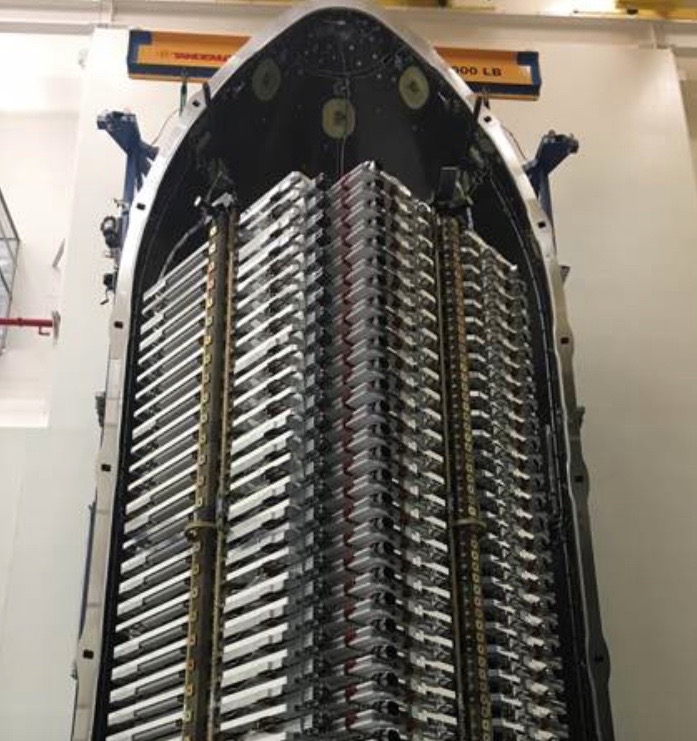SpaceX to Launch 60 Satellites for Starlink Megaconstellation Soon. This Is What They Look Like

SpaceX's internet-satellite megaconstellation will start taking shape very soon.
The company plans to launch 60 of its "Starlink" broadband satellites this week, likely on Wednesday (May 15), SpaceX founder and CEO Elon Musk announced via Twitter over the weekend.
All 60 spacecraft are crammed into the payload fairing of a single Falcon 9 rocket, which will lift off from Florida's Cape Canaveral Air Force Station. The launch window on Wednesday runs from 10:30 p.m. EDT to midnight EDT (0230 to 0400 GMT on May 16), according to Spaceflight Now.
Related: SpaceX's 1st Prototype Starlink Satellites Are Up and Running
You can watch the launch here at Space.com when the time comes, courtesy of SpaceX, or directly via the spaceflight company.
The five dozen satellites pretty much fill the cavernous fairing, as Musk showed in another tweet. He posted side-by-side photos of the Starlink craft in their fairing and his Tesla Roadster in its fairing in early 2018, before the car took flight on the first test mission of SpaceX's Falcon Heavy rocket. (The Falcon 9 and Falcon Heavy use fairings of the same size.)
First 60 @SpaceX Starlink satellites loaded into Falcon fairing. Tight fit. pic.twitter.com/gZq8gHg9uKMay 12, 2019
Just two weeks after that February 2018 Falcon Heavy launch, a Falcon 9 sent the first two Starlink satellites skyward. But that duo, nicknamed Tintin-A and Tintin-B, were pathfinders; the 60 going up this week are "production-design" satellites, Musk said.
Breaking space news, the latest updates on rocket launches, skywatching events and more!
And many more will follow these pioneers, if all goes according to plan. SpaceX eventually aims to loft thousands of Starlink satellites, which will provide relatively cheap internet access to people around the world.
A minimum of six more 60-satellite launches will be required to provide "minor" Starlink coverage, while 12 more will boost the coverage to "moderate," Musk said in another tweet last weekend.
And SpaceX isn't the only company that wants to provide space-based internet; for example, OneWeb and Amazon are both planning megaconstellations of their own.
- See the Evolution of SpaceX's Rockets in Pictures
- In Photos: SpaceX's 1st Falcon Heavy Rocket Test Launch Success!
- Elon Musk: Private Space Entrepreneur
Mike Wall's book about the search for alien life, "Out There" (Grand Central Publishing, 2018; illustrated by Karl Tate), is out now. Follow him on Twitter @michaeldwall. Follow us on Twitter @Spacedotcom or Facebook.

Michael Wall is a Senior Space Writer with Space.com and joined the team in 2010. He primarily covers exoplanets, spaceflight and military space, but has been known to dabble in the space art beat. His book about the search for alien life, "Out There," was published on Nov. 13, 2018. Before becoming a science writer, Michael worked as a herpetologist and wildlife biologist. He has a Ph.D. in evolutionary biology from the University of Sydney, Australia, a bachelor's degree from the University of Arizona, and a graduate certificate in science writing from the University of California, Santa Cruz. To find out what his latest project is, you can follow Michael on Twitter.
